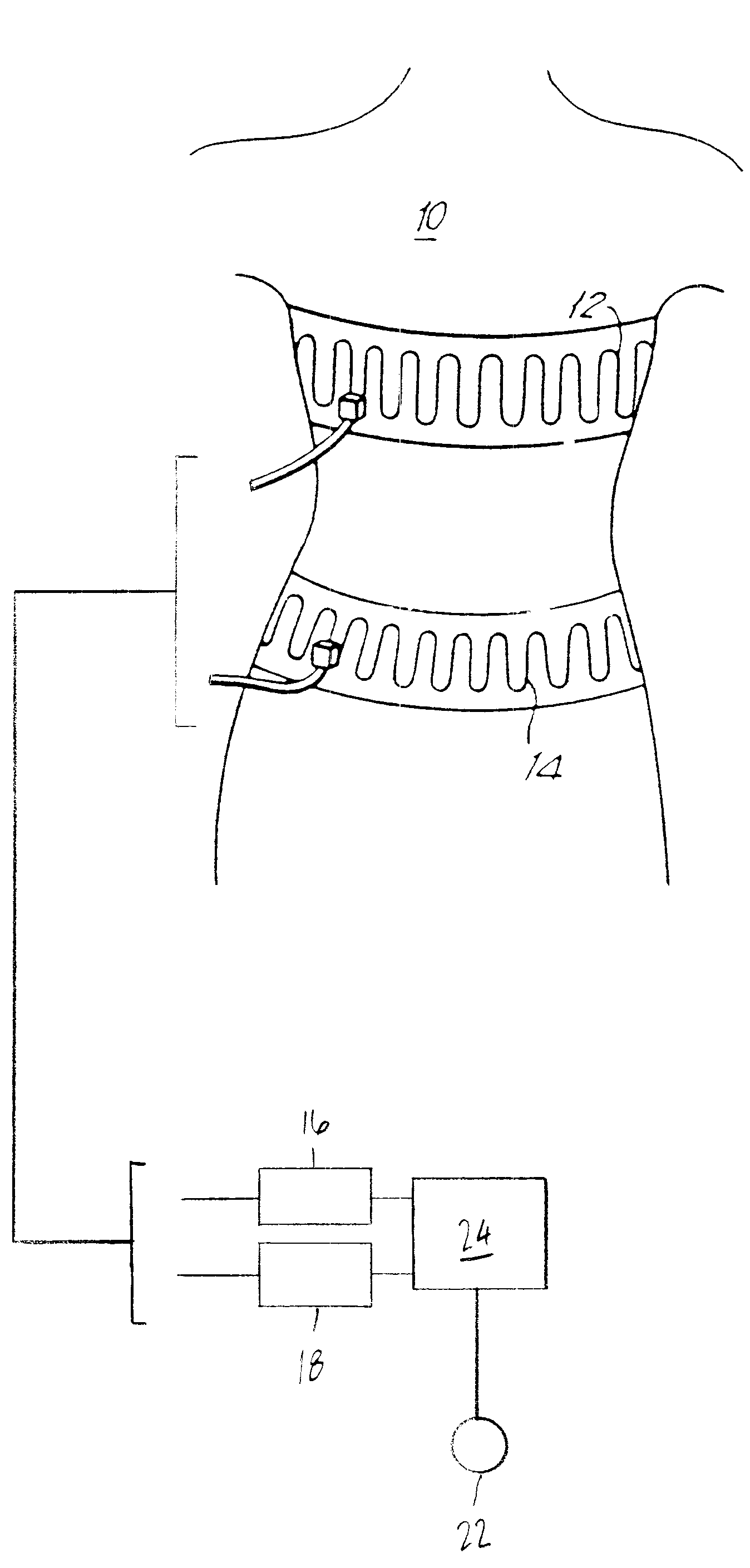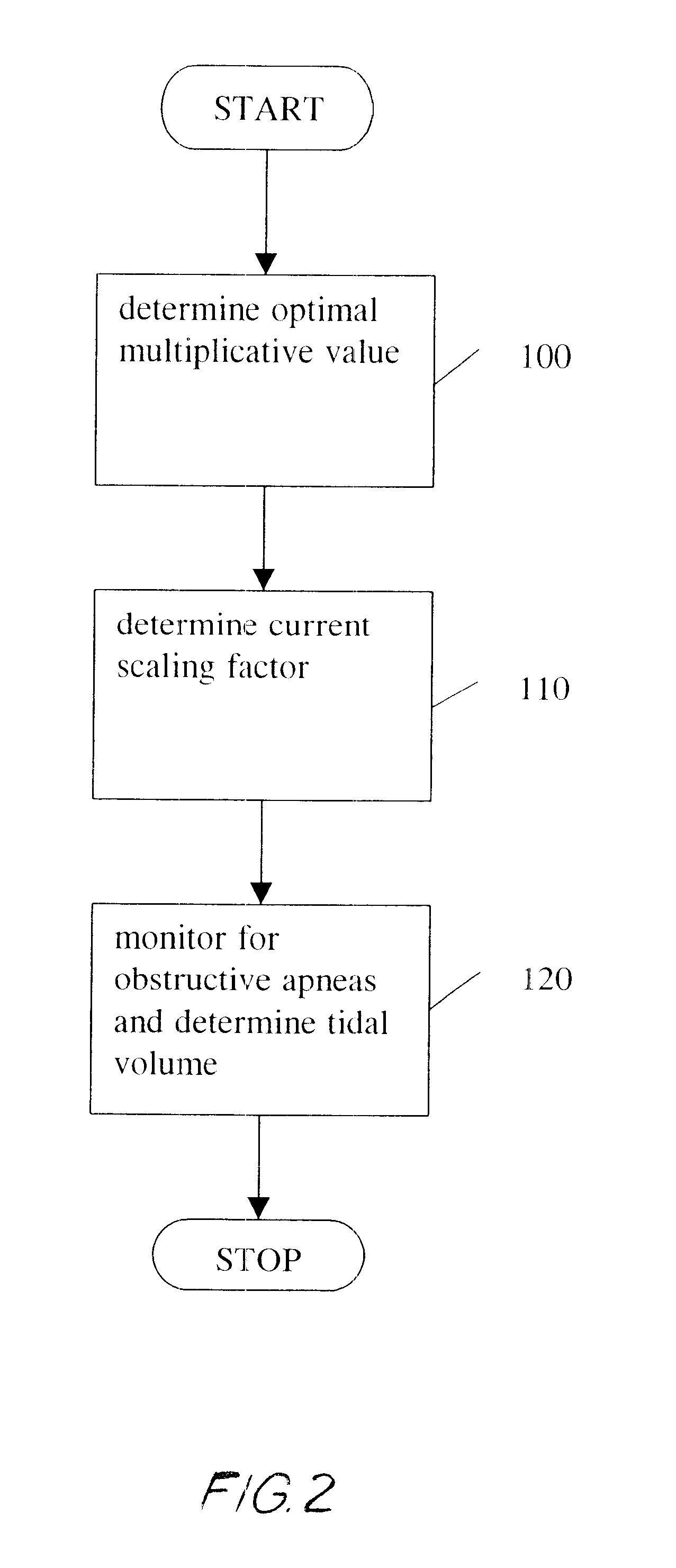Quantitative calibration of breathing monitors with transducers placed on both rib cage and abdomen
a breathing monitor and transducer technology, applied in the field of quantitative calibration of breathing monitors, can solve the problems of inaccurate estimation of tidal volume and more difficult to diagnose obstructive apnea using this method
- Summary
- Abstract
- Description
- Claims
- Application Information
AI Technical Summary
Problems solved by technology
Method used
Image
Examples
Embodiment Construction
Referring now to FIG. 1, a breathing monitor for measuring tidal volume during respiration is disclosed including two sensors 12, 14 arranged on a torso of a subject 10 so that the sensors 12, 14 measure the contraction and expansion of the ribcage and the abdomen. The breathing monitor is based on the two compartment lung model. That is, the basis for measuring breathing is an approximation that the respiratory system moves in two degrees of freedom of motion, wherein one compartment of the two compartment lung is the rib-cage and the other compartment is the abdomen. In a preferred embodiment of the present invention, the sensors 12, 14 comprise inductive plethysmographic transducers for measuring the excursions of the rib-cage and abdomen. However, instead of inductive plethysmograph transducers, the breathing monitor may include a jerkin plethysmograph, linear differential transformers, magnetometers, a bellows pneumograph, strain gauges, piezoelectric devices, impedance pneumog...
PUM
 Login to View More
Login to View More Abstract
Description
Claims
Application Information
 Login to View More
Login to View More - R&D
- Intellectual Property
- Life Sciences
- Materials
- Tech Scout
- Unparalleled Data Quality
- Higher Quality Content
- 60% Fewer Hallucinations
Browse by: Latest US Patents, China's latest patents, Technical Efficacy Thesaurus, Application Domain, Technology Topic, Popular Technical Reports.
© 2025 PatSnap. All rights reserved.Legal|Privacy policy|Modern Slavery Act Transparency Statement|Sitemap|About US| Contact US: help@patsnap.com



